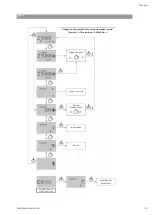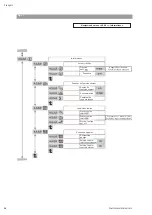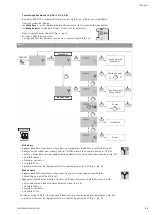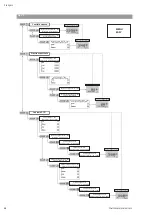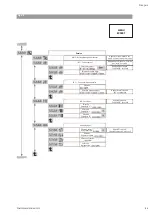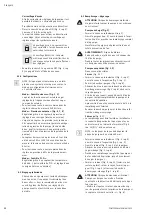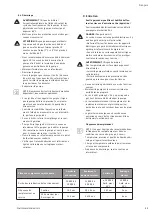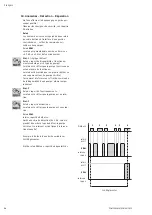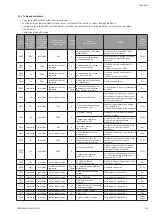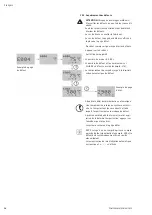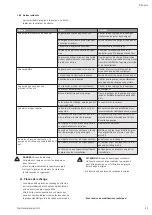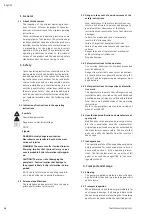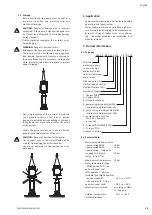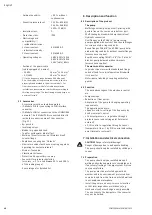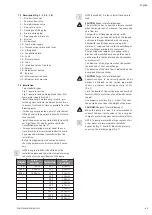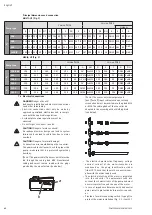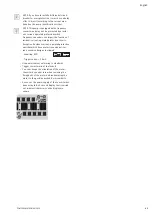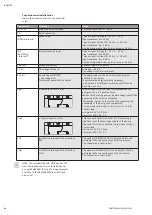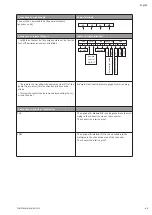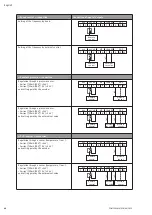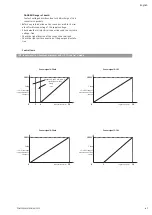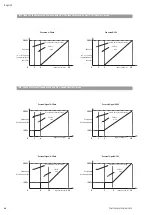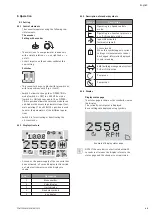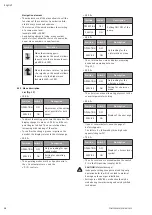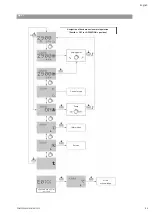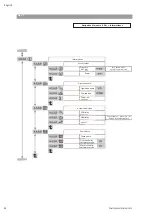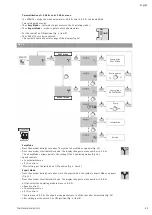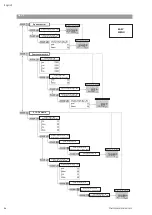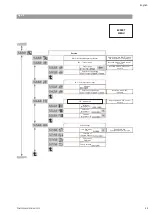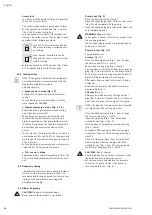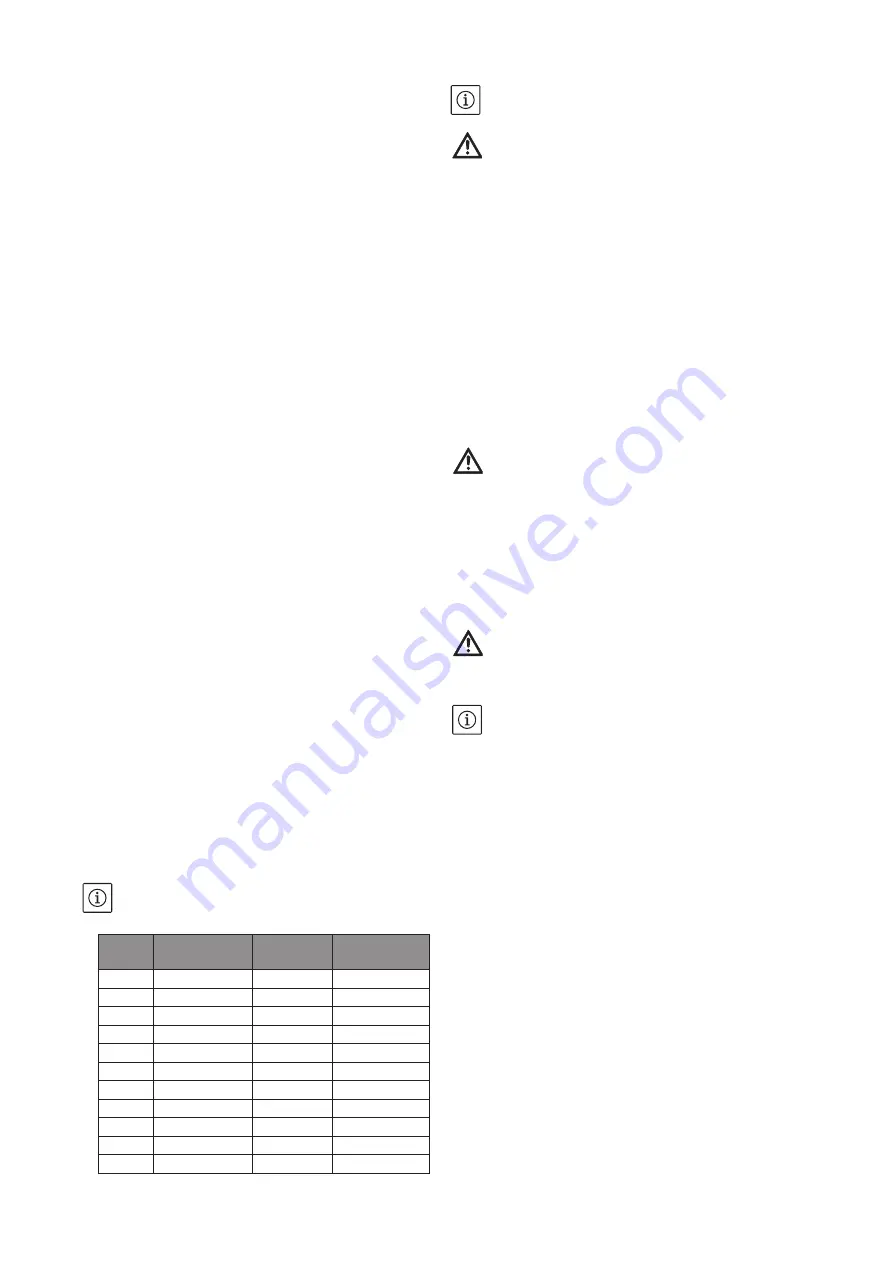
Altitude
Loss of
head (HA)
Temperature
Loss of
head (HA)
0 m
0 mCL
20 °C
0,20 mCL
500 m
500 mCL
30 °C
0,40 mCL
1000 m
1000 mCL
40 °C
0,70 mCL
50 °C
1,20 mCL
60 °C
1,90 mCL
70 °C
3,10 mCL
80 °C
4,70 mCL
90 °C
7,10 mCL
100 °C
10,30 mCL
110 °C
14,70 mCL
120 °C
20,50 mCL
7.2 Description (Fig. 1, 2, 5, 6, 7, 8)
1 - Strainer-foot valve
2 - Pump suction valve
3 - Pump discharge valve
4 - Non-return valve
5 - Venting and filling plug
6 - Drain-priming plug
7 - Pipe supports or brackets
8 - Strainer
9 - Storage tank
10 - Town water supply
11 - Disconnecting switch with fuses
12 - Lifting hook
13 - Foundation block
14 - Cock
15 - Pressure sensor
16 - Tank
17 - Insulation valve of the tank
18 - Display
19 - Adjustement button
BP - By-pass
HA - Maximum suction head
HC - Minimum inlet pressure
7.3 Installation
Two standard types.
Fig. 1: pump in suction
Fig. 2: pump in load on storage tank (item 9) or
town water supply (item 10).
- Install the pump in a place easy to reach, pro-
tected against extrema conditions (rain and sun
in excess, frost) and as close as possible from the
drawing point.
- For heavy pumps provide a point of attachment
(lifting hook) in the pump axis (item 12) to facili-
tate removal.
- Install the pump on a concrete block (at least 10
cm high) (item 13) and fix with anchor bolts
(installation plan see Fig. 3).
- Foresee an insulating material under the con-
crete block (cork or reinforced rubber) to avoid
any noise and vibration transmission into the
installation.
- Before final tightening of anchor bolts, ensure
that the pump axis is vertical: use shims if neces-
sary.
NOTE: Keep in mind that the altitude of the
installation place and the water temperature may
reduce the suction possibilities of the pump.
NOTE: Beyond 80° C, plan to install the pump in
load.
CAUTION!
Danger of material damage!
The installation has to bear the pressure reached
when the pump runs at maximum frequency and
zero flow rate.
- Pump with oval flange pump casing : with
threaded screw-on tubes directly on the tapped
oval counterflanges delivered with the pump.
- Pump with round flange pump casing: with
weld-on or screw-on tube in the counterflanges
(counterflanges available as accessories).
- Pump casing with rapid hose coupling : with a
bracket, to be installed with an end to be fixed
on the pipe (bracket and threaded end available
as accessories).
- The diameter of the pipe must never be smaller
than the one of the counterflange.
- The direction of the fluid flow is indicated on the
pump identification sticker.
CAUTION!
Danger of material damage!
Connections have to be correctly sealed, no air
entrance is allowed on the suction pipe which
shows a minimum mounting declivity of 2%
(Fig. 1).
- Limit the length of the suction pipe and avoid all
features that cause losses of head (bends, valves,
tapers).
- Use supports or collars (Fig. 1, 2, item 7) so that
the pump does not bear the weight of the pipes.
CAUTION!
Danger of material damage!
When the pump is in load, it is recommended to
connect the non-return valve to the pump dis-
charge to protect it against hammer blow effects.
NOTE: To pump water with a large content of air
or hot water, we recommend to install the
bypass kit (Fig. 1, item BP). Mount the pressure
sensor on the discharge pipe (Fig. 7).
POMPES SALMSON 06/2013
English
41
Summary of Contents for MULTI-VE Series
Page 2: ......
Page 3: ......
Page 5: ...5 11 7 6 1 13 3 2 7 100 mm Mini 200 mm Mini 100 mm Mini HA 2 BP Fig 1...
Page 6: ...8 9 12 5 11 2 3 2 7 7 4 4 6 13 10 ou or ou or 100 mm Mini HC Fig 2...
Page 8: ...Fig 4...
Page 9: ...2 14 1 Fig 5...
Page 10: ...10 17 16 ou or 15 Fig 6 10 ou or 17 15 16 Fig 7...
Page 11: ...17 16 15 Fig 8...
Page 12: ...19 18 Fig 9 Fig 10...
Page 13: ...Fig 11...

